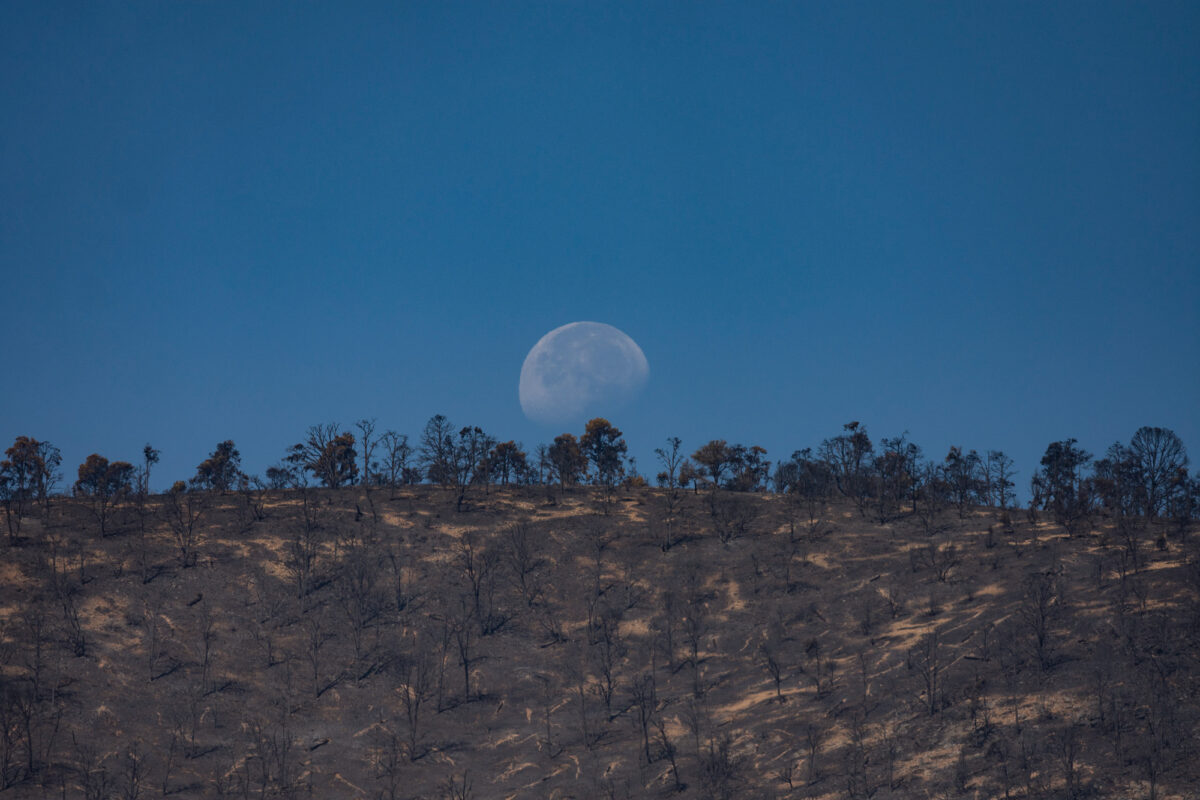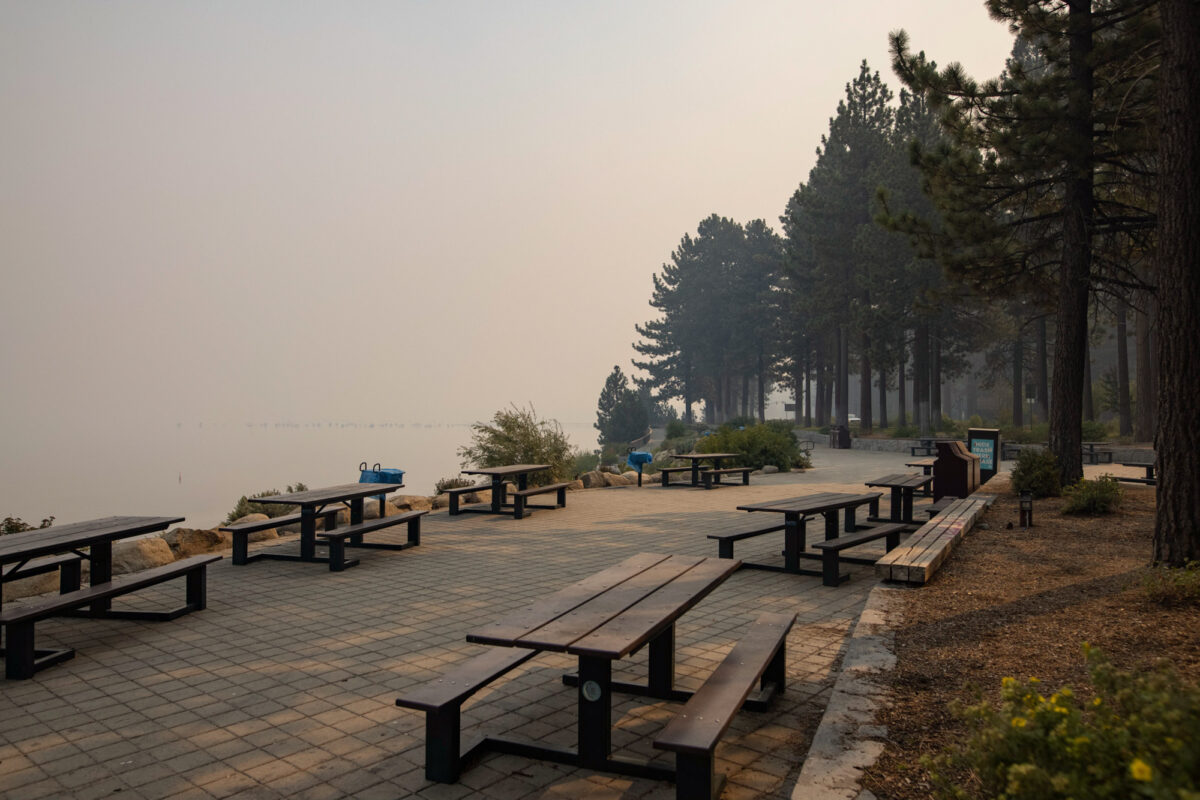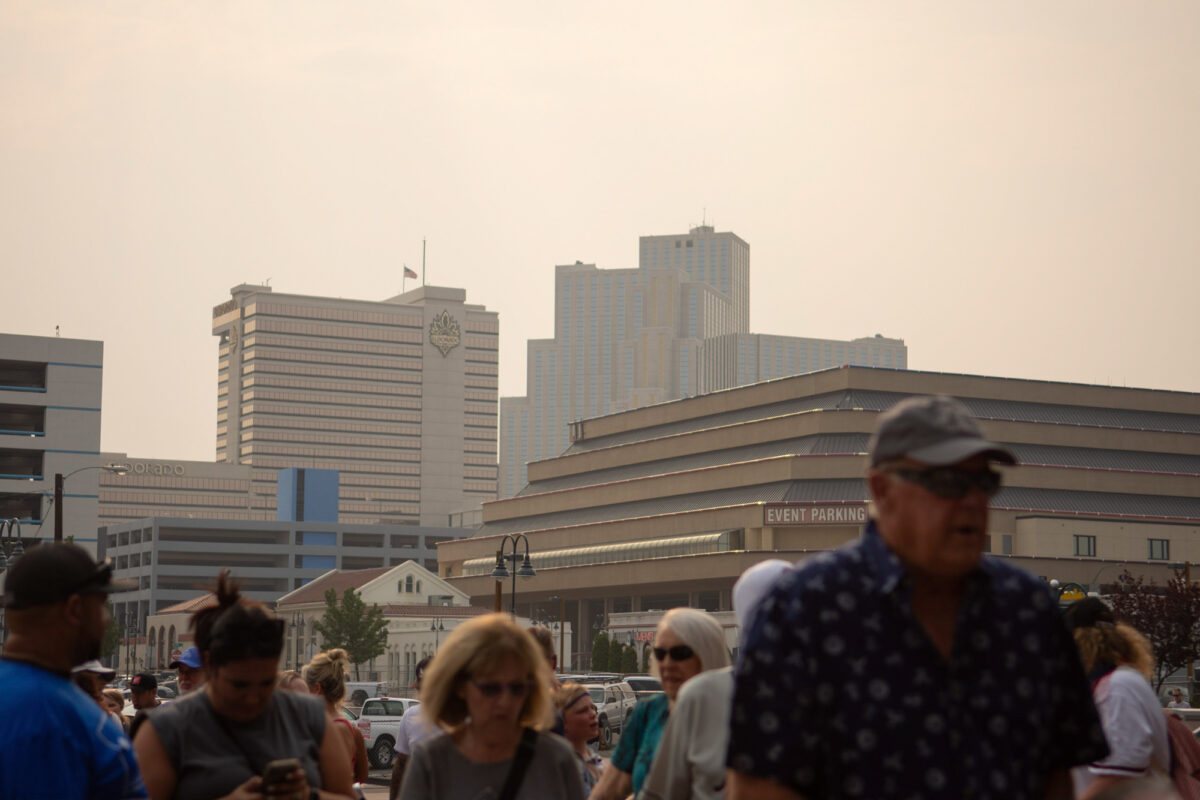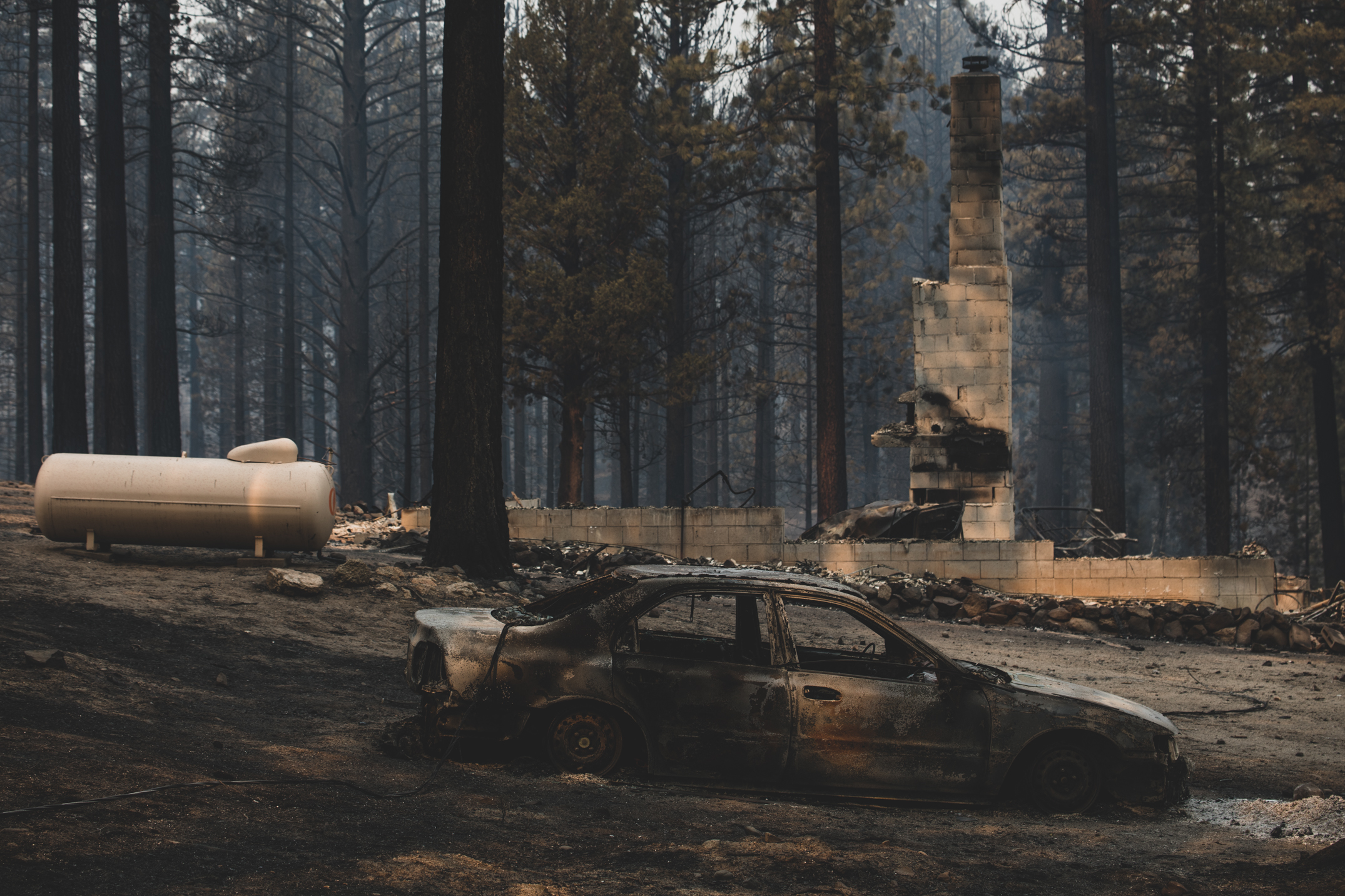From record heat in Las Vegas to fires burning 138 acres in Sparks, Nevadans statewide were reminded this month that summers are becoming longer and hotter.
That reminder isn’t just in residents’ backyards like the smoke that rolls down the Sierras during August. It’s in their homes as well — more specifically, in their home insurance policies.
Nevadans have seen home insurance rates rise by 21 percent since 2018. The reasons for the price hikes vary — they include the increased cost of lumber that raises construction costs and more wildfire risk in certain regions — but at the core, many of the problems with home insurance becoming more expensive are caused by climate change.
Warmer temperatures worldwide cause not only higher sea levels but drier conditions that cause more ample, flammable fuel for large wildfires.
Scott Kipper, Nevada’s insurance commissioner, said that the state is working on several ideas to mitigate rising insurance costs, although he acknowledges that “I don’t think these ideas are fully baked.” He also said the Nevada Division of Insurance could bring concerns to lawmakers when the Legislature reconvenes in February.
Northern Nevadans in particular are feeling the strain of rising home insurance costs.
More than 200 Incline Village residents who attended the June 28 town hall hosted by the Nevada Division of Insurance said they are not being helped as their rates increase by 100 percent to a 1,000 percent. Condo owners are concerned no one has their backs because the Division of Insurance does not have jurisdiction over commercial properties.
“Come back and talk to me in 2027 when maybe you’ve got something,” one Incline Village resident told Kipper, who shared plans to help with insurance costs. “I have fire insurance; my rate went from $14,000 to $136,000.”
California and Florida are among the states with the most significant home insurance hikes because of the states’ proximity to highly forested and ocean areas. But the problem is international, according to Alice Hill, a senior fellow for energy and the environment at the Council for Foreign Relations, former special assistant to the president during the Obama administration and former senior director for Resilience Policy at the National Security Council.
And the increased insurance rates could have ripple effects — some of which could be dire — to America’s infrastructure and economy.
Here’s a look at how prepared Nevada is for the effects of climate change, what is happening with home insurance now and what could happen if the state does not plan.

Increased risk equals increased cost
Darcie Goodman Collins, the chief executive officer of Keep Tahoe Blue, was one of the people who evacuated from South Lake Tahoe when the Caldor Fire was approaching Nevada in 2021. Though her house didn’t burn in 2021, Goodman Collins’ it did burn down in the Angora Fire in 2007 and was rebuilt afterwards.
She said South Lake Tahoe is “definitely a community that was very used to evacuation and traumatized from that experience [of wildfires].”
Goodman Collins, who stayed with her organization and home after her staff of 18 people had evacuated during the Caldor Fire, said what she remembers is the horrific air quality and the anxiety the community had because of their experience with Angora Fire.
“Especially in my neighborhood, where a lot of the residents moved back and rebuilt, and they’d already gone through this once,” Goodman Collins said. “It was very traumatic for them thinking, ‘Well, we’ve already done this once. Are we going to lose our house again?’”
She said that her neighbors’ reactions to the fire were surprising because there used to be a sense of security that an area that had burned would not burn again for some time. However, that’s no longer the case.
“Just the way fires are burning so much more intensely and so much more frequently, made us realize that, ‘Wow, it can happen more frequently,’” Goodman Collins said. “And just because this neighborhood burned 10 years ago doesn’t mean that it’s not still impacted by the threat of forest fire in the future.”
However, Goodman Collins said large-scale incidents can also help organizations such as hers prepare more for wildfires and South Lake Tahoe was likely more ready and adapted for a wildfire because of the Angora Fire.
Goodman Collins’ experience is becoming more common. The number of wildfires have doubled in the last 20 years, said Nevada State Fire Warden Kacey KC. On average, about 500,000 acres of Nevada land burns every year.
“Our highest year in recorded history was 1999, with 1.9 million acres burned in the state that year,” KC said. “Lowest in recorded history was last year — 1,300 acres — so it kind of ebbs and flows.”
Increased wildfires are expected this summer because it is following two wet seasons. Sparks and Elko have already experienced multiple fires in early June.
Catastrophic weather events have more policyholders requesting assistance from their insurance companies and because the damages are becoming greater, so are the insurance rates.
For example, if someone buys a $3 million home in Incline Village but only has $200,000 worth of insurance on that home and it is completely destroyed in a wildfire, the policyholder will not have the funds to reclaim what they once had. This gets particularly complex if the homeowner is still paying a mortgage.
Scott Menath, the managing partner of Menath Insurance, which serves parts of Northern Nevada and California, said the price increases started in California but have bled into the Nevada side of Lake Tahoe and into the Truckee Meadows.
He said home insurance rates are increasing as much as 1,000 percent in some areas around Lake Tahoe, and it usually becomes a problem when people are selling.
“Insurance costs aren’t really felt too much to the current homeowners yet,” Menath said. “[But] when they go to sell it, the next insurance carrier isn’t going to want to reinsure it once there’s a change in ownership … so it is deeply affecting when you go to buy a home and you get to closing and put a house in escrow. A lot of times we’re seeing major sticker shock, and we’re seeing homes not closing as a result of the insurance costs as well.”

National ripple effects
Nationally, Hill said major insurance companies such as State Farm are leaving, especially in places such as California and Florida where extreme weather events are becoming more and more common,. Insurance companies cited “high inflation, catastrophe exposure, reinsurance costs and the limitation of decades-old insurance regulations as reasons for scaling back policies in the state,” according to an LA Times article. The remaining insurance companies are smaller and, as a result, have less money and less capacity to deal with large-scale events because the companies can’t spread the risk out like a national company can.
This creates a need for insurers of last resort — also known as residual insurers, such as Citizens Property Insurance Corporation in Florida — which take on high-risk areas when others won’t. However, if a large-scale event happens that these insurers can’t handle and future premiums can’t pay back, the state could be responsible for bailing out the companies. That could mean higher taxes for state residents even if they were not affected by a large-scale climate event.
Currently, Nevada does not have an insurer of last resort, but creating one is among the ideas that Kipper said the Division of Insurance is looking into.
Nevada is among the states where it is legal to not have home insurance. However, most mortgage lenders require home insurance so the bank has a safety net if the home is destroyed before someone has fully paid it off.
As more properties are becoming uninsurable or have insurance rates that aren’t affordable, some sellers might adjust the property cost to accommodate the high insurance costs. This means that some people’s mortgages could be worth more than their property.
That, coupled with depressed real estate markets because the cost of buying is so high, has economists seeing conditions similar to the 2008 housing crash in certain areas.
“It’s not going to be everywhere,” Hill said. “But there are going to be markets significantly affected. I think markets along the Atlantic coast, the Gulf Coast, these wildfire-prone states.”

Is Nevada’s infrastructure prepared for increased temperatures?
Reno is one of the fastest warming cities in the U.S. and infrastructure in the U.S. is largely unprepared for the effects of climate change, Hill said.
“Humans tend to judge risk based on what we ourselves have experienced, or someone close to us experienced,” Hill said. “But if it hasn’t occurred for a while, the concern drops off.”
That makes planning for events caused or worsened by climate change difficult.
“So we tend to underestimate how bad it gets,” Hill said. “We’re just seeing that repeatedly. We’ve seen it in the choices about infrastructure [and] in the choices about people moving toward risk.”
Hill said more people are actually moving into wildfire-prone areas. Additionally, about 40 percent of the nation’s population lives in coastal counties that are at risk for large-scale storms and flooding.
Taylor Adams, the president and chief executive officer of the Economic Development Authority of Western Nevada, said Northern Nevada’s infrastructure may be uniquely ready for the extreme weather variations because the region deals with significant temperatures — hot and cold — already.
“The joke that I hear all the time is ski in the morning, play golf in the afternoon,” Adams said. “And there’s some truth to that … our baseline climate pattern sets itself up for a better response to variability in weather.”
However, when talking about development, Adams said he had “never gotten a question about climate change” but believes it is at the top of mind for companies — such as Tesla — that are moving into Northern Nevada because they are in the business of clean energy.
Adams also said that if there was a large-scale weather event such as a wildfire that displaced residents, Northern Nevada would have a unique ability to house people because of the state’s significant hospitality economy.
The Reno metropolitan area has at least 16,000 hotel rooms, Adams said. However, if people are displaced permanently, that would be a more challenging problem.
As climate change continues to create different circumstances for Northern Nevada residents and neighboring communities in California, Adams and Goodman Collins said one trait of Nevadans comes out when faced with disaster: community.
“I generally refer to it as Nevada toughness,” Adams said. “But in that toughness, there is also a kindness that is community-focused. And it expects everyone here to focus more on ‘us’ and ‘we’ rather than ‘I.’”

